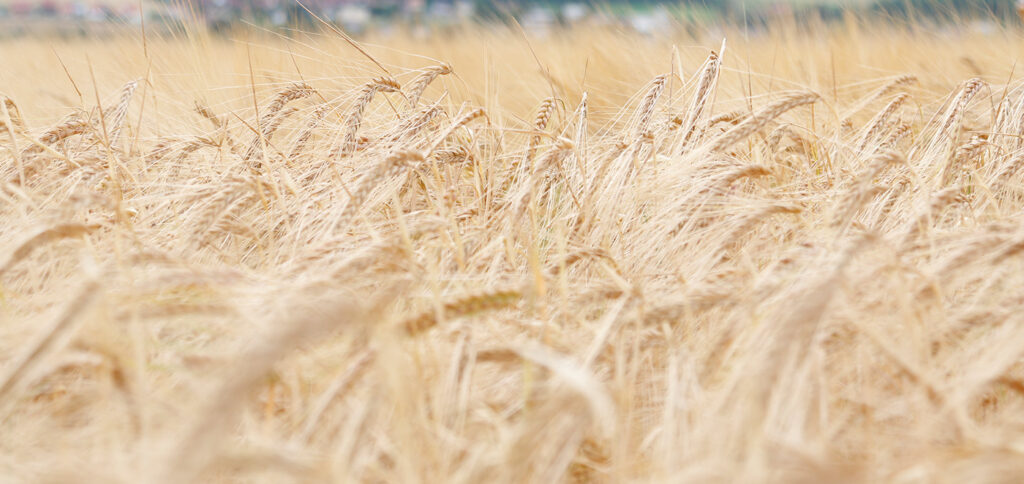How climate change affects malting barley

Farmers are hit particularly hard by climate change: They notice the impact of drought, heavy rainfall and other weather problems directly in their fields. Barleycorn is a good example of how changes in climate directly affect the brewing process.
Stefan Hör, Martina Gastl and Thomas Becker from the Chair of Brewing and Beverage Technology at the Technical University of Munich have analyzed how altered climate conditions during the grain-filling phase can lead to a noticeable drop in the quality of the malting barley, which in turn affects the brewing process [1]. This is something that brewers should keep a close eye on.
It all comes down to the weather in the grain-filling phase
In the German brewing industry, the two years of extremes, 2018 and 2019, led in part to noticeable drops in quality where the successful saccharification of malt starch in the brewhouse is concerned. Despite the generally good enzymatic equipment, there were yield losses, low levels of final fermentation and extended saccharification periods, which had a noticeable negative effect on the quality of the beer. It is likely that the extreme climate conditions during the grain-filling phase resulted in a change in the starch structure of the malting barley.
To understand the reasons behind this, you need to take a close look at barleycorn: What is the state of science in starch development? Why are the growth site and the prevailing weather conditions there so important for the resulting starch structure? And how is starch actually synthesized during the growth of the plant?
Starch received little attention – until now
The starch of malting barley plays a critical role in the production of malt and beer as a whole. This makes it all the more surprising that starch and its quality have received relatively little attention in recent years; instead, research focused on alternative yeasts and hops technology in particular.
Unter Braugerste versteht man im Gegensatz zur Futtergerste eine Gerste, die für Brauzwecke und damit zur menschlichen Ernährung angebaut wird. Deutschland deckt seinen Bedarf an Braugerste nach wie vor zur Hälfte durch Importe ab. Im Jahr 2019 entsprach dies 1,26 Millionen Tonnen Gerste aus dem Ausland.
In many ways, starch – the main component of barleycorn, at around 65 percent – is extremely relevant in this regard. Its quality affects not only the residual sweetness, depth of flavor and body of a beer; ultimately, the amount of fermentable sugar also determines how much alcohol there will be after fermentation. Starch should also be considered from an economic perspective, since it significantly influences raw material yields, as well as must, lautering and filtration times.
Saccharification problems and yield losses
The reason for neglecting starch in research and quality control is probably that its proportion in the grain has already been optimized through breeding, and – fortunately – has not caused many processing problems. As early as crop years 2006 and 2012, whose summers were unusually hot and dry, there were isolated saccharification problems and/or yield losses. In hindsight, however, years like these were largely exceptions.
Then came the 2018 heat wave, followed by a similarly hot 2019 in which the ground struggled with the lingering water deficit from the previous year as well. These conditions seem to have had an effect on the synthesis of starch and led to increased problems for various companies.

A look at the inner workings of malting barley
When you look at the insides of such starch grains, you can see a layered structure separated into alternating hard (crystalline) and soft (amorphous) levels. Abiotic stress during the growth of the plant, particularly dryness and heat, has a significant effect on the individual starch synthesis pathways.
Investigations into the effects of dryness on the size of starch grains show that both A and B grains turned out smaller in comparison with the control groups. While this could be determined consistently for wheat, water scarcity in barley led to a significant decrease in size in the B grain group [2].
Environmental factors affect enzymes in starch synthesis

The synthesis of starch is a highly complex interplay between numerous enzymes whose activities depend on several environmental factors. The internal structure of starch itself can vary greatly from location to location within the same plant genus due to differing weather conditions.
For the brewing industry, this results in fluctuations in the sugar composition of the wort depending on the enzymatic conversion of the starch.
Although science in this area is in its early days, extremely hot and dry weather conditions in particular (especially during the grain-filling phase) have been identified as serious influencing factors in starch synthesis.
This is alarming in light of climate change and the expectation that extreme weather conditions in Europe will increase in frequency. These challenges require a detailed understanding of the underlying mechanisms behind starch synthesis and long-term solution strategies, for example for breeding.
Would you like to share your developments and innovations in the beverage industry to an international specialist audience? Then we would very much like to invite you to take part in the next drinktec from September 12 to 16, 2022, in Munich.
This article is powered by BRAUWELT.
Literature
1. Hör, S.; Gastl, M.; Becker, T.: „Stärke ist nicht gleich Stärke – ein Blick ins Innerste eines Gerstenkorns“, BRAUWELT Nr. 1-2, 2021, S. 8–10 (URL: https://www.brauwelt.com/de/themen/rohstoffe/642481-st%C3%A4rke-ist-nicht-gleich-st%C3%A4rke-%E2%80%93-ein-blick-ins-innerste-eines-gerstenkorns) .
2. Brooks, A.; Jenner, C. F.; Aspinall, D.: „Effects of water deficit on endosperm starch granules and on grain physiology of wheat and barley”, Functional Plant Biol. 1982, 9, S. 423-436, DOI: 10.1071/PP9820423 (URL: https://www.publish.csiro.au/fp/PP9820423).
